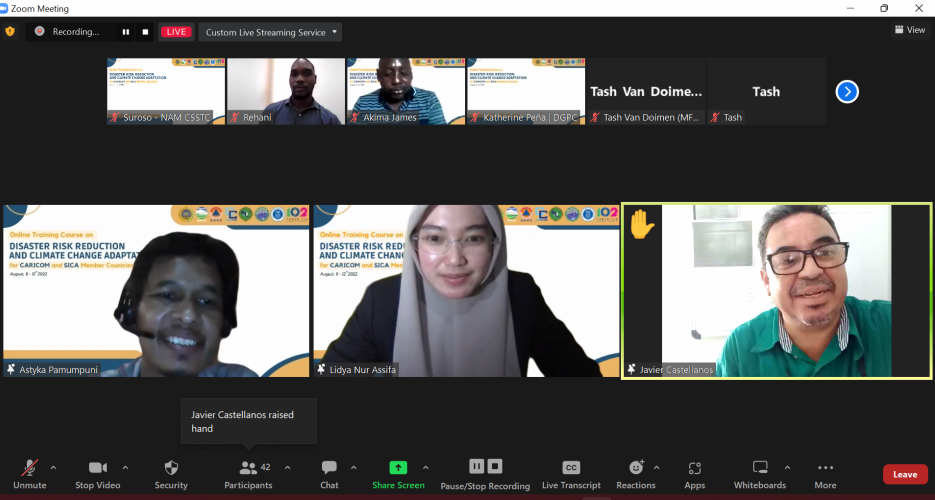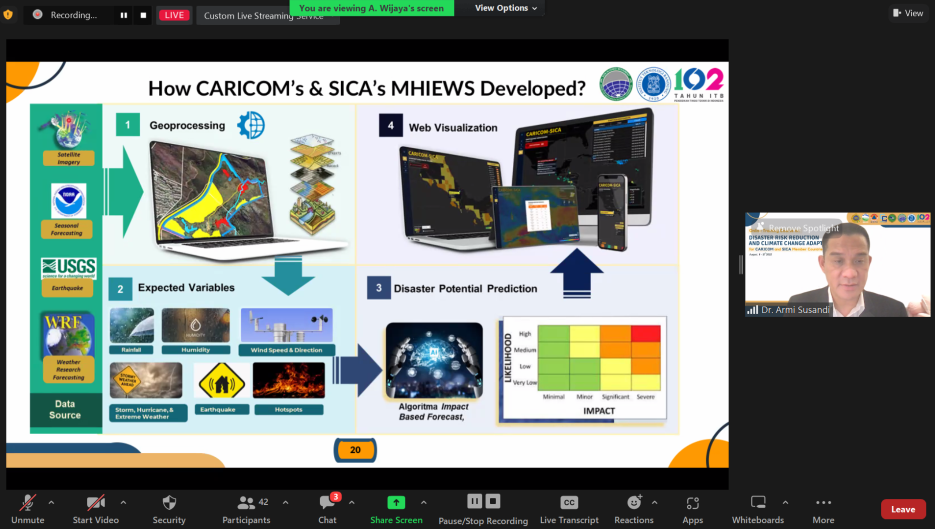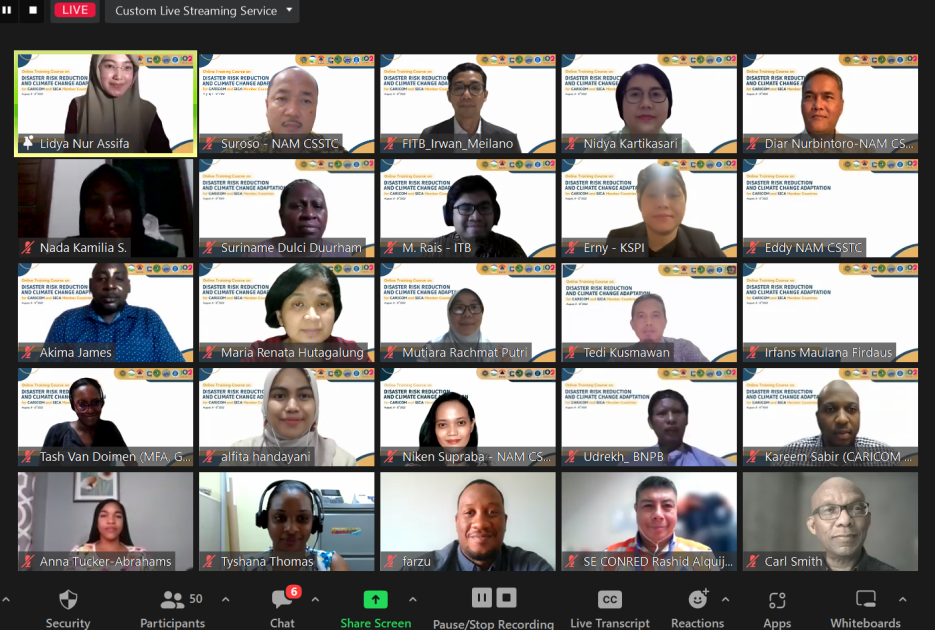|
NAM CSSTC and Institut Teknologi Bandung Held a Five-Day Training Programme Aimed at Increasing Disaster Mitigation Capacity

In 2021, the World Meteorological Organization (WMO) released a public report titled "State of the Climate in Latin America and the Caribbean," demonstrating how extreme weather and climate change are increasing the frequency of natural disasters in the region. Extreme weather and climate change cause mega-drought, extreme rainfall, land and marine heatwaves, and glacier melt, with ramifications felt from the Amazon to the Andes, the Pacific to the Atlantic oceans, and all the way to Patagonia.


Based on this context, the Non-Aligned Movement Centre for South-South Technical Cooperation (NAM CSSTC) and Institut Teknologi Bandung (ITB), in collaboration with the Ministry of Foreign Affairs, Indonesia's National Disaster Management Agency, and the Meteorological, Climatological, and Geophysical Agency of the Republic of Indonesia, held a five-day training programme from August 8-12, 2022, aimed at increasing disaster mitigation capacity, strengthening disaster management, and strengthening disaster management of CARICOM and SICA member countries.
On the last day of training, August 12, 2022, 34 participants were divided into four groups to work on hands-on activities, specifically mapping the impact chain of specific hazards, with each group focusing on a different type of hazard. Participants used the theory they had learned during the speaker's presentation session to work on the impact chain mapping, and the real-time results of their work were given comments and input by the ITB speakers.


During the training, learning activities brought together stakeholders from various CARICOM and SICA member countries to collaborate on mapping the impact chain. This type of activity is critical for strengthening South-South and triangular cooperation in the context of knowledge sharing and resilience to future natural disaster risks.
Following the training's implementation, the following conclusions were reached:
-
Calculations are performed in risk, for example, to calculate financings.
-
Discussions with local governments, field surveys to calculate capacity and probability, and assessment tools with a lot of equations to get some information are some of the parameters used to create a risk assessment map.
-
Controlling how people build houses near landslide prone areas is one of mitigation measures for landslides so that no one is injured when a landslide occurs.
-
One scheme for establishing disaster catastrophe calculation is to do value capture on the difference between the land value before the infrastructure and the land value after the infrastructure.
-
In the rural area, we should usually have just a kind of groundwater map to validate the incidences of hydrological drought.
-
Before we build the sea wall, we usually analyse the cost and benefit, as well as how much money we spend to build the sea wall and how effective it is not only to protect the people behind the wall but also to study what the effect is.
-
Student can participate, for example, in the heavy rain forecast for particular area.
|

